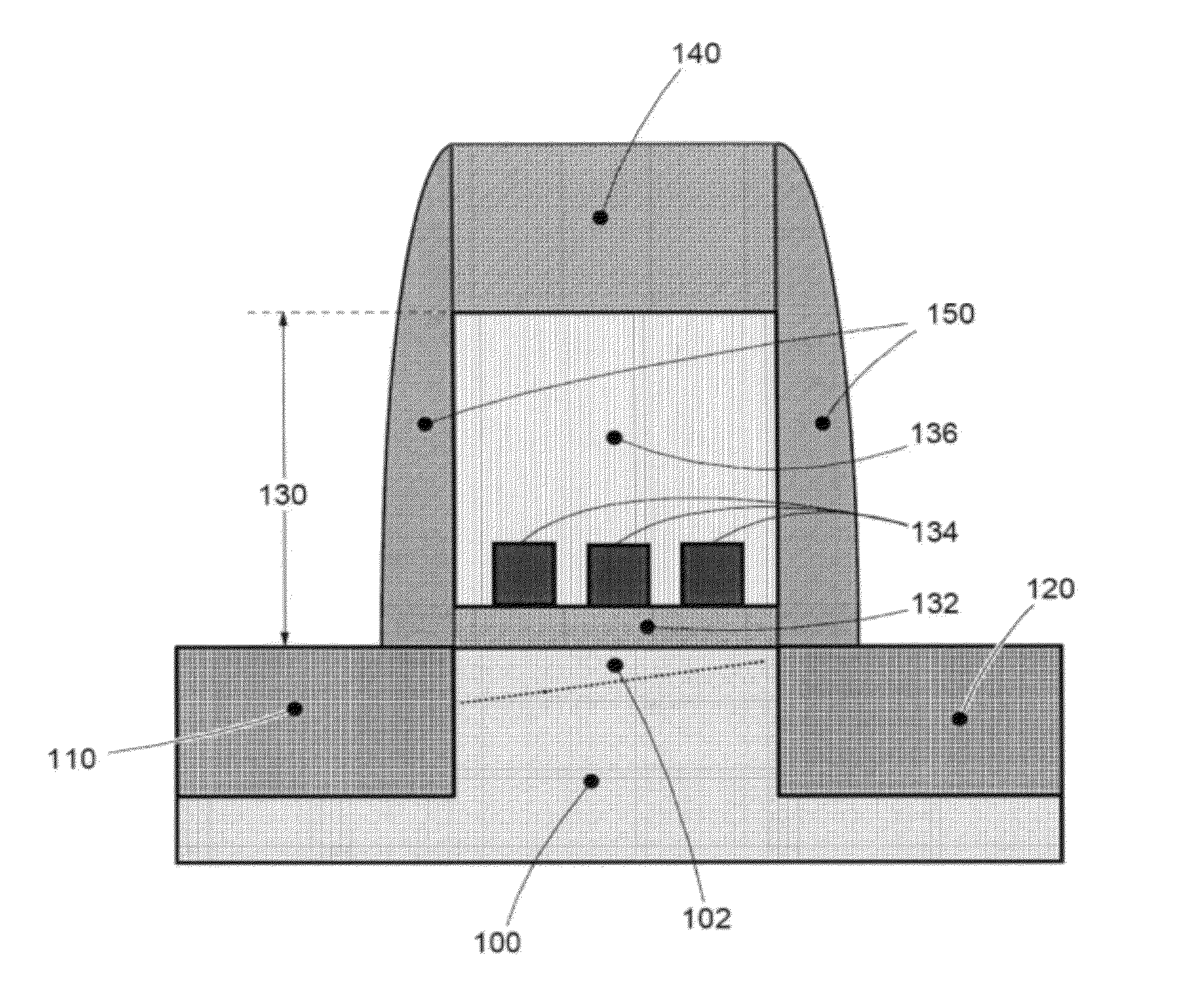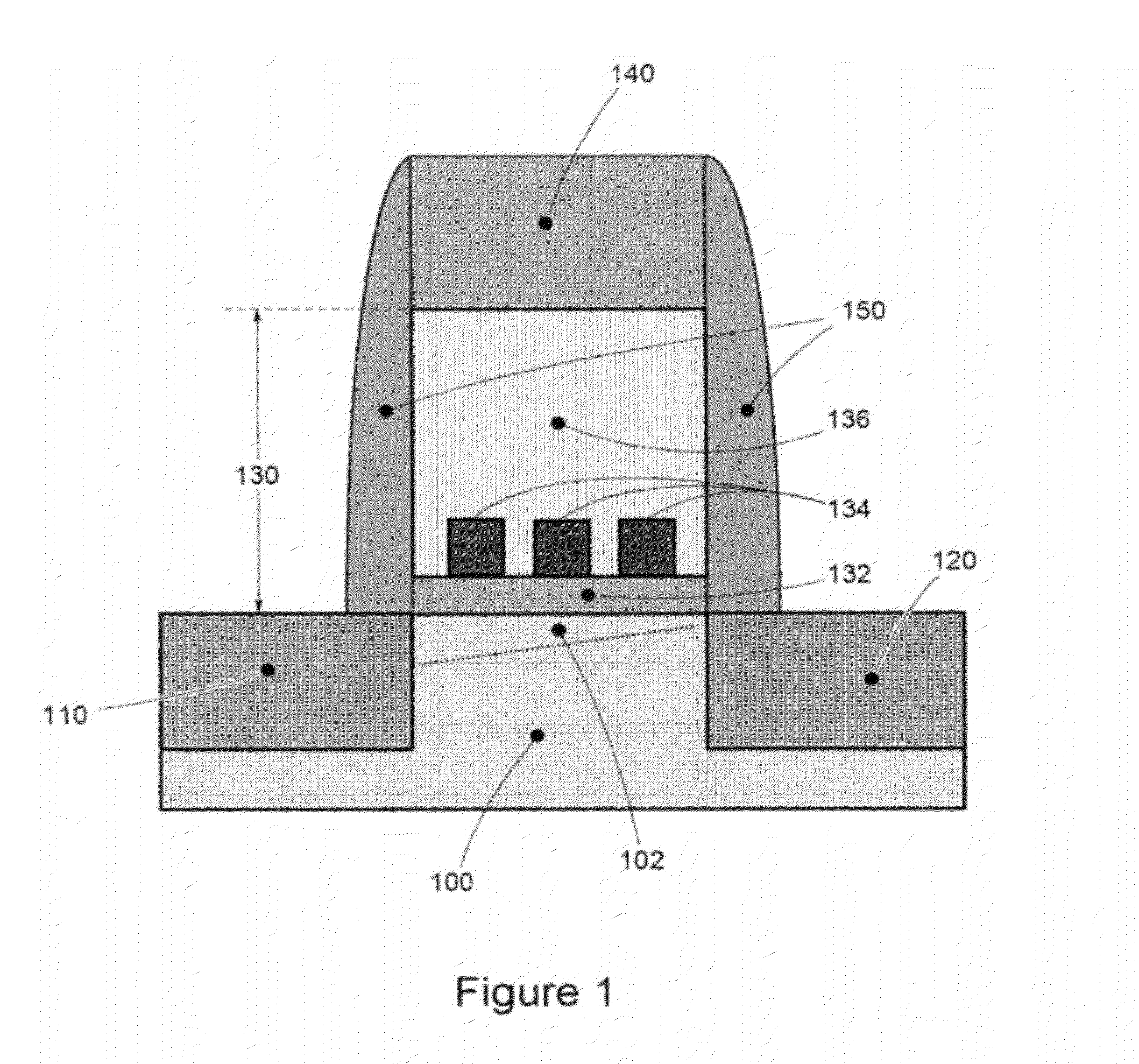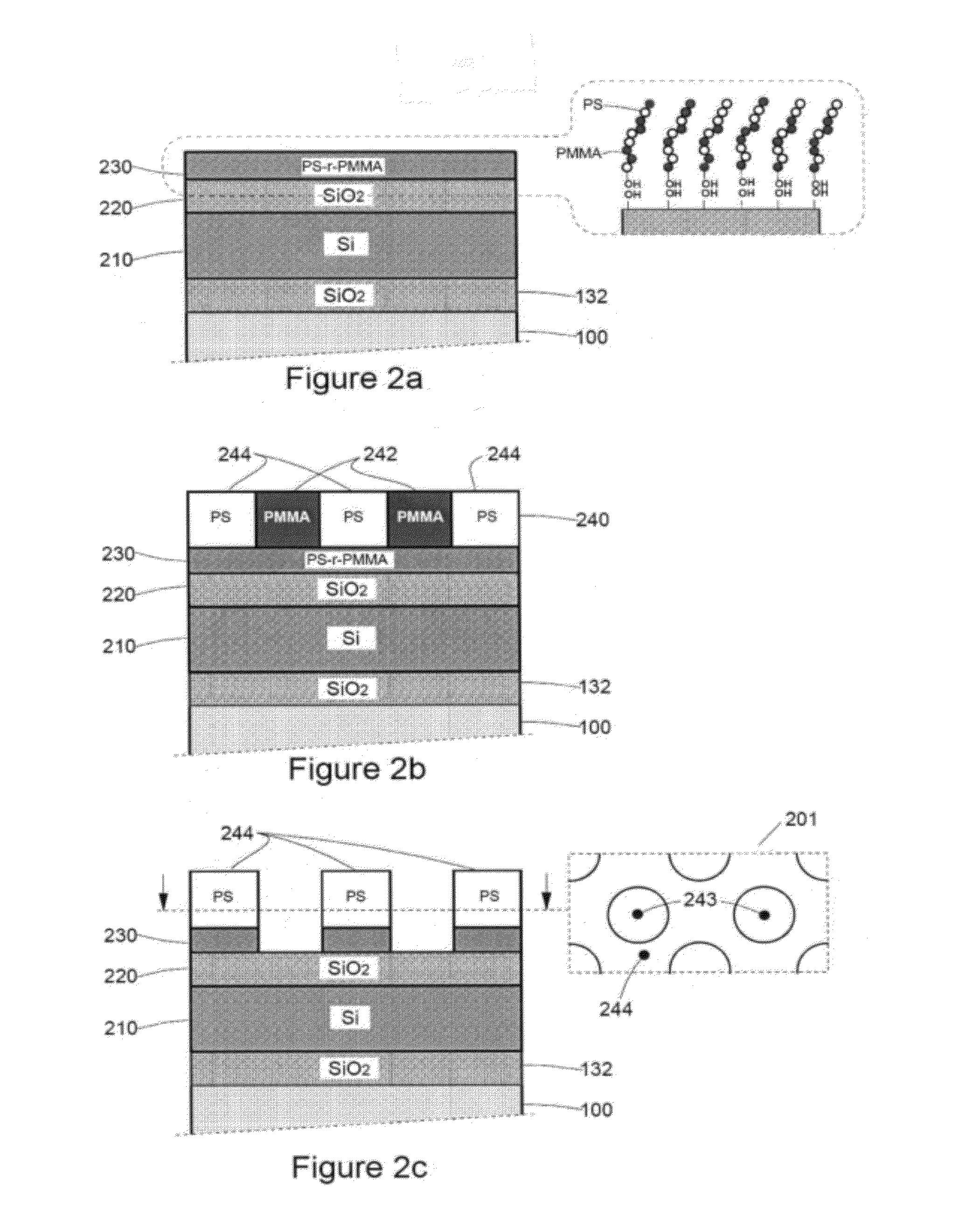Process for obtaining an array of nanodots
a nanodot and nanotechnology technology, applied in the field of nanocrystal production, can solve the problems of poor control of the evolution of these dots, and the deformation of metallic dots used in the floating gates of transistors, so as to improve the behavior of nanodots, improve the performance of mosfet transistors, and maintain the behavior of dots obtained according to the invention.
- Summary
- Abstract
- Description
- Claims
- Application Information
AI Technical Summary
Benefits of technology
Problems solved by technology
Method used
Image
Examples
Embodiment Construction
[0041]Before a detailed description of the invention is presented, it is recalled that it describes a method for obtaining an array of nanodots for microelectronic devices comprising the following steps: deposition of a silicon layer on a substrate; formation, above the silicon layer, of a layer of a material capable of self-organizing, in the interior of which at least one polymer substantially forms cylinders organized into an array within a matrix; formation of patterns in the layer of a material capable of self-organizing by elimination of the said cylinders; formation of a mask by transfer of the said patterns; production of silicon dots in the silicon layer by engraving with the mask; silicidation of the silicon dots, comprising deposition of a metal layer.
[0042]Optionally, the invention may additionally comprise at least any one of the following optional characteristics:
[0043]Preferably, the silicon layer is a layer of polycrystalline silicon. Alternatively, the silicon layer...
PUM
| Property | Measurement | Unit |
|---|---|---|
| thickness | aaaaa | aaaaa |
| thickness | aaaaa | aaaaa |
| thickness | aaaaa | aaaaa |
Abstract
Description
Claims
Application Information
 Login to View More
Login to View More - R&D
- Intellectual Property
- Life Sciences
- Materials
- Tech Scout
- Unparalleled Data Quality
- Higher Quality Content
- 60% Fewer Hallucinations
Browse by: Latest US Patents, China's latest patents, Technical Efficacy Thesaurus, Application Domain, Technology Topic, Popular Technical Reports.
© 2025 PatSnap. All rights reserved.Legal|Privacy policy|Modern Slavery Act Transparency Statement|Sitemap|About US| Contact US: help@patsnap.com



